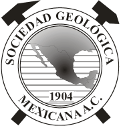|
BOLETÍN DE LA SOCIEDAD GEOLÓGICA MEXICANA, V. 53, n. 1, (2000) 72-83 http://dx.doi.org/10.18268/BSGM2000v53n1a4 |
|
Volcanismo y extensión en la Provincia Extensional del Golfo de California
Arturo Martín Barajas
Departamento de Geología. CICE8E, Km 107 carretera Tijuana-Ensenada, Ensenada, B. C.
This email address is being protected from spambots. You need JavaScript enabled to view it.
Abstract
Volcanism in the Gulf of California Extensional Province (GEP) records the transition from subduction to continental rifting (15-4 Ma), and to oceanic rifting in the last 3.5 Ma. Earlyextension in central Sonora (2512 Ma) is geometrically located in intra-arc and back-arc position relative to the Miocene volcanic arc along eastern Baja California. Here beginning of extension is constrained between 11 and 16 Ma, as waning subduction and arc-volcanism in Baja California progressively ceased. In southem Baja Califomia the Santa Rosalía basin and uplift of the crystalline block La' Paz-Los Cabos region may have occurred in late Miocene and late-middle Miocene, respectively.
The transition from subduction to rifting is accompanied by a change in the eruptive processes and magma composition from dominantly calc-alkaline dacitic-andesitic volcaniclastic aprons to alkaline and tholeiitic basalt and andesite f1ows, Coeval calc-alkaline rhyolite to dacite dome complexes, caldera-type ignimbrite deposits, and composite andesitic volcanoes occur along the eastem margin of the Baja Peninsula and several islands within the Gult. From -12 Ma up to present alkali basalt erupted intermittently in Baja Califomia to the west of the main Gult escarpment, and to a lesser extent, on the opposite side in central Sonora. In Plio-Quatemary times more typical intra-plate alkaline basalt have erupted in a few places on both rift sides. Low-K sub-alkaline basalt, and differentiates erupted from 10 to 5 Ma along both margins and over a broad region in southem Baja California. Later «5 Ma), these sub-alkaline rocks erupted in a more restricted area within the Gult, and evolved into MORB-like lavas in the nascent spreading centers.
The diversity in magma composition and eruptive style in post-subduction lavas may reflect heterogeneity in the mantle source due to long-lived subduction and various degree of partial melting during crustal extension.


